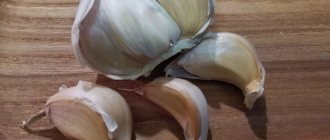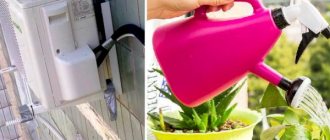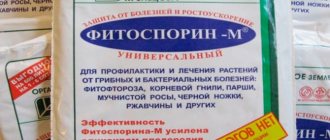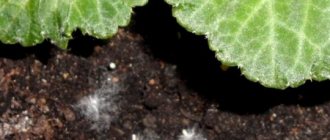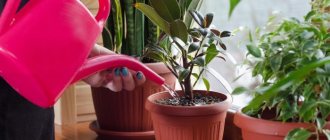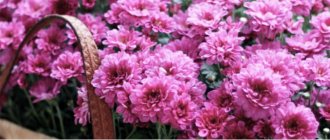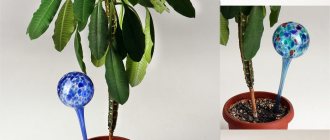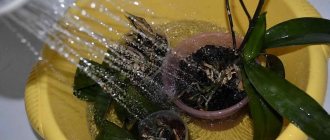Criteria for selecting water for watering home flowers
Not every water that is used to water a houseplant has a beneficial effect on it. Therefore, quite often there are cases when, after prolonged watering, a seemingly healthy young plant begins to turn yellow, fade, or even disappear completely. Many people may not even immediately guess what this is connected with. But it's all about the water.
It is necessary to water indoor flowers with water at approximately room temperature, with a minimum amount of harmful impurities, and of course, with a neutral pH level. It is by these 3 criteria that the suitability of water for watering home flowers is determined. Let's talk about each point in more detail.
Water temperature
Why is it so important to water indoor flowers with water at a certain temperature? The answer is simple - fragrant indoor plants may simply not tolerate a cold shower or watering with warm water, especially if the flowers are overly sensitive. Therefore, it is very important to let the water reach room temperature. This is an ideal option for watering indoor plants.
Whatever water you take: tap water, rain water, etc., you must adhere to the temperature rules. Otherwise, if you water the flowers with cold water, the roots of the plants will experience a certain shock, and this will have a detrimental effect on their development. The flowers will either begin to grow more slowly or completely dry out and die.
Warm water is also taboo for watering indoor plants, with the exception of some flowers, for example, orchids during flowering. Therefore, do not forget to defend it and bring it to the desired temperature. Your plant will definitely thank you for this with its blooming appearance and unfading beauty.
Chemical composition of water
The presence of chemical impurities in the water is of no small importance when watering indoor plants. We are talking about chlorine, all kinds of heavy metals, etc.
These impurities are far from safe for flowers, since they settle primarily on the roots of plants and violate their integrity. All this leads to premature wilting of the flower. Therefore, when choosing water, it is important to take into account the place from which it comes.
If you use rainwater to water your flowers, try to use only that which was formed as a result of heavy, prolonged rains. If the rain was short-lived, there is a high probability that the melt water contains many harmful, even toxic, substances. This mainly applies to industrial areas and places located near highways.
Along with such rains, harmful substances released into the atmosphere by factories and transport will fall. And only if the rains are prolonged, then not the first portion of flowing water may be suitable, and most importantly, safe for indoor plants.
Particular attention should be paid to tap water. It contains chlorine - the main enemy of all life on the planet. Houseplants are no exception. When chlorine gets on the root or leaf of a flower, it mercilessly kills the plant.
In addition to chlorine, tap water contains a huge amount of salts. As a rule, these are chlorides, well-known to many, which harm the growing plant, depriving it of its vital potential. Therefore, the water from the water supply that will be used to water the flowers will need to be settled or diluted. You should not immediately pour water that has just come out of the tap into flower pots.
Hardness of water
One of the most important criteria for water selection is its hardness level. Hardness depends mainly on the presence of so-called alkalis in the water. They often mean dissolved carbonates, usually magnesium and calcium. And the more dissolved salts of such metals are in the water, the harder it is.
To determine the hardness, you need to make a request to the water supply station, of course, the local one. Because water hardness is not the same in every area. But, if it is not possible to contact the station, then you can try to determine the alkaline balance of the water yourself, at home. This can be done by examining the flower pot up and down.
As a rule, house flowers are watered with the same water for a long time, that is, either always with tap water, or rain, etc. If the water hardness was high, then over a long period of time during which the flowers were watered with such water, the walls of the pot White streaks must appear. This will indicate that the water contains lime in increased quantities.
An equally eloquent indicator of excessive rigidity is leaf chlorosis. This is due to the fact that an overly alkaline soil environment blocks the access of nutrients directly to the plant itself. For this reason, the leaves of the flower first begin to lighten and then turn yellow.
If you find such frightening symptoms in your houseplants, urgently replant them in fresh soil. This will definitely help save the flowers from death.
Acidity
A very important factor in water for irrigation is its acidity level. It can be determined using litmus paper. This must be done in advance, before the watering process begins. Increased acidity of water has a detrimental effect on the house plant, especially if it is very sensitive. Such sensitive plants include hydrangea, camellia, orchid, etc.
Each individual type of flower has its own acceptable level of water acidity. If the irrigation “material” does not meet the standards, then it must be adjusted and brought to the required parameters. To do this, you can drop simple lemon juice into some water. It will help reduce high acidity to the required level.
Tap water
If the source is a river, then you can use tap water, pre-settled for at least overnight, at room temperature (22-25 degrees). During this time, the chlorine present in the liquid will evaporate. Most often, the waters of rivers and streams contain calcium and magnesium salts.
Their level affects water hardness. When water is very hard, plants cannot absorb important elements from the soil: manganese, phosphorus, aluminum, iron, boron. Therefore, you need to use methods to reduce hardness by adding appropriate preparations or distilling through a filter or boiling.
White stains and even the appearance of a crust on the surface of the soil and pot indicate great hardness.
And the plants themselves begin to signal the hardness of the liquid. Magnesium and calcium salts prevent plants from absorbing nutrients. The leaves of the plants begin to lighten and gradually turn yellow. Having discovered a similar symptom, the indoor flower should be transplanted into new soil. The following are especially sensitive to hard water: anthurium, azalea, fern, orchid, camellia, bromeliads, and aroid families.
If water comes into the water supply network from a well, it can be very hard and it is not advisable to use it for irrigation without preliminary treatment.
How to deal with water hardness
Of all the above factors, reducing water hardness is the most labor-intensive process. While bringing water to the required temperature and correct acidity is practically no problem, lowering the alkaline balance is not an easy task.
Many gardeners are faced with this problem, but not everyone has a solution to it. In order for you to help your indoor plants avoid the harsh effects of water, let's talk about ways to soften it.
Advocacy
The first method is perhaps the easiest to implement, unlike other cleaning methods. All you need to do is let the water sit for 24 hours. During this time, a certain amount of lime will be released from it, which will help the water become much softer.
And if your water also comes from a water supply canal, then chlorine will evaporate from it during settling. This cannot but be called an undeniable advantage when watering flowers with such water.
Freezing
It is more convenient to use this method in winter. It is necessary to pour all the water with which you are going to water the flowers into a large metal container and leave it in the frost.
As soon as half the water in the container freezes, the top layer of ice needs to be broken through. The unfrozen portion of water must be thrown away; it will no longer be useful. But broken ice needs to be heated over a fire. We use the water formed as a result of melting for irrigation.
Using a reverse osmosis filter
Using reverse osmosis, you can quickly and practically effortlessly remove chlorine and salts from tap water.
The essence of a system such as reverse osmosis is to remove all harmful substances on semi-permeable special membranes. The system does not require an external energy source to purify water.
For reverse osmosis to work, the pressure from the local water supply is quite sufficient. But when purified in this way, tap water in its parameters becomes close to rainwater. It significantly reduces the level of salts and other substances unsafe for house plants.
Boiling water
A fairly simple way to purify water at home is to boil it and cool it. Thanks to this method, all the lime contained in the water in the form of plaque will settle on the walls of the dish, and accordingly, the water will become softer and cleaner. But, if a large amount of water is needed for irrigation, then the boiling method will not be entirely convenient.
Adding peat
You can reduce the hardness of water for irrigation using peat. For this you will need 100 g. fresh peat and 10 l. water. It is with these proportions that the result will be more significant.
So, we put the peat in a linen bag, and then put it in a container with water for the whole day. If you don’t have time to wait, and you need water right now, then make your own peat filter and pass a portion of fresh water through it.
To make a filter, take a flower pot (preferably large) with a drainage hole. Then place a linen napkin at the bottom of the pot (the cloth should be rough), and pour loose peat on top of it. Fill the flower pot to the top. After this, place the container with peat above the empty bucket.
Fill another bucket with water and pass it through a peat filter. All the water that flows into the bucket from the filter will be suitable for irrigation. By the way, adding peat will help not only soften the water, but also acidify it.
Uses of oxalic acid
To reduce the so-called carbonate hardness, you can use a solution of oxalic acid. To prepare it you will need a liter jar filled with water and 30 grams. acid that we pour into this jar.
We prepare water for irrigation as follows:
- Dilute 50 ml. oxalic acid in 10 l. water.
- We keep the water and acid for 24 hours.
- The water is ready for irrigation.
Just make sure that the sediment that has settled at the bottom of the container does not fall into the flower pot.
Reducing water hardness using chemicals
To soften the water for watering flowers, you can use chemicals, such as special liquids or tablets. Such chemicals are rich in various acids that can neutralize lime in the water.
However, you need to be careful with this procedure. It is very important to maintain the accuracy of the proportions; they depend directly on the level of water hardness. You should also not overuse this method of softening, since not every flower can positively perceive the effects of water filled with chemicals.
Is it possible to water indoor flowers with water from an aquarium?
An aquarium is a closed ecosystem. Microorganisms and bacteria live in it. Dissolved minerals, vitamins, humic acids. The liquid is warm and oxygenated. Inhabitants are fish and snails, which add urea.
Water from an aquarium is no longer just life-giving moisture, but an organic substrate.
Regarding its use, the opinions of flower growers are completely opposite. Some consider aquarium substrate an elixir for moisture-loving species. They notice the lush flowering and lush greenery of the potted inhabitants. Others are not seeing fantastic growth.
Even specialists are not enthusiastic about the method. The undoubted benefits are considered:
- temperature of the irrigation liquid;
- savings on fertilizing;
- oxygen saturation;
- no chlorine.
But it cannot be called clean, even despite the filters. There will be no harm to plants from aquarium liquid if you moisten the soil periodically - once a month.
Important! Before watering, the aquarium substance is aerated by blowing atmospheric air through the water column with an aerator.
Aquarium - organic substrate
Watering flowers: which water to choose?
Among flower growers and ordinary lovers of a home oasis, disputes still continue to this day: what is the best way to water flowers, and what kind of water is completely unsuitable for watering.
The opinions of experts, of course, are divided, but I will try to come up with my list of “good” and “bad” water.
How to water flowers
- Rainwater, only if it is not collected in industrial areas or near transport routes. Melt water contains a minimum of salts and harmful acids. Such water, combining with the soil, forms nitrates that are beneficial for plants, which contribute to the rapid growth of the flower.
- Enriched water, that is, water that contains silver ions. You can make this water yourself, at home. You just need to immerse any silver object in water for at least 15 minutes. Houseplants should be watered with this water once a week.
- Tap water , but only if it is purified and not hard. Otherwise, chlorine and the presence of harmful impurities, with prolonged watering, will destroy the plant.
The above types of water are the most optimal for watering indoor flowers for a long time. Such waters are not only safe for flowering plants, but also extremely beneficial for them, especially melt water. In order not to spoil indoor flowers, it is important to know not only what you can water them with, but also what you should not do.
Water that should not be used to water flowers
- Well water . It often contains too many minerals, and this negatively affects the plant. Flowers, of course, need useful minerals, but an excess of them will not benefit the plants.
- River or lake water . These types of waters are least suitable for irrigation. They contain various bacteria, viruses, rotting products and even waste. No matter how you settle and purify such water, it will still not be useful or safe for indoor plants.
- Distilled water . It is considered “dead” because it is completely devoid of minerals, vitamins and salts. And for the development and growth of home flowers, all these substances, in reasonable quantities, are simply necessary.
- Water from the air conditioner formed as condensation. Its qualities are very similar to distilled water, and such water, as we know, will not bring benefits to plants.
All of the above types of water apply to watering all plants, without exception, even overly “capricious” and sensitive ones. For example, an orchid is a delicate and special flower that requires constant attention and careful, and most importantly, proper care. But even despite this, all of the above watering rules are fully applicable to it.
Is it possible to water flowers with beer?
Flower fans on forums discuss not only what kind of water is suitable for watering indoor plants, but also what else to irrigate their pets with.
Gardeners know about the benefits of yeast - they are used as a top dressing.
Yeasts are fungi. In the ground they awaken microorganisms that actively process organic matter. A lot of nitrogen and potassium are released, which are necessary for green spaces.
The soil in a flower pot is quickly depleted, and yeast comes in handy here. They are found in abundance in beer. Without even doubting whether it is possible to water flowers with beer, flower growers practice this method.
The beer method is beneficial only if the drink is “alive”. Preservatives and stabilizers, which preserve bottled beer for up to six months, are harmful to plantings.
The indoor rose is considered a beer “admirer”. Money trees, dracaenas, and spurges are tolerant of such moisture.
Important! Before watering, “live” beer is diluted with water in the ratio: 1 part intoxicating drink to 10 parts liquid.
Watering orchids
Although it is best for watering orchids, in principle, like other plants, rain and settled water are suitable. It is less rigid and “clogged” with impurities.
Sometimes distilled water is used to water orchids, but in this case, the flowers must be additionally nourished with useful substances.
During the orchid bloom
During flowering, watering orchids is somewhat different from the usual regime. Flowers need to be watered not only with the correct quality, but also with the correct temperature water.
The temperature should be slightly above room temperature, but not more than 40 °C. In addition, during flowering, the orchid needs to be watered more often, but under no circumstances should it be flooded.
All other types of water, such as river water, from an air conditioner, well and tap water (if it is not settled) are not suitable for watering orchids.
It is always important to remember that the blooming future of a house plant will depend on the choice of water. Therefore, watering flowers is an important stage in raising an indoor green-eyed pet. Do not forget about the advice we have given - and may your indoor flowers always be full of beauty and healthy appearance.
Free book “Orchids. Practical guide" Book "Home First Aid Kit for Orchids"
24.09.14
Nadezhda Galynskaya
to defend any water for watering home flowers (and for drinking) . The soil will become less alkalized and plants, especially exotics from the tropics (azaleas, dracaenas, lemons, orchids) will become more cheerful and stop being capricious. River, spring, rain and melt water is not always clean, and is often mixed with toxic substances. Bottled and boiled water, although it contains fewer dissolved minerals and does not salinize the earth like regular tap water, is dead liquid with a destroyed structure and low oxygen content. To saturate with air and restore bioenergy, they also need to be left for 0.5-3 hours. Drinking water from a tap or well is most suitable for watering house plants. Well water is allowed to stand for 6-12 hours, but not more than 1 day. During this time, some of the mineral salts will precipitate or concentrate in the lower part of the vessel with water. Such settled water is not used all to the drop, but only the upper part (2/3 or ½ of the volume of water). Tap water must be left to stand for at least 3 hours in an open vessel with a wide top in order for chlorine or ozone to evaporate (if the water is ozonated). The narrower the vessel, the longer it will take. If the hardness of tap water is high, a sediment forms at the bottom of the dish when it settles, which is poured out after watering. By the way, freshly split flint stone perfectly attracts any suspensions and promotes their sedimentation. There is no need to leave the water out for more than 2 days. It may deteriorate or begin to bloom. When watering in winter and autumn, if the water is cold, add boiling water so that the water temperature becomes 3-4 degrees higher than in the room. Read more How and why water is settled
plant needs
Irrigation water is of great importance for the development and growth of indoor plants. All the nutrients necessary for this, which are in the soil, are available to plants only in dissolved form in water. The quality of the water affects how these substances will dissolve and then be absorbed by the roots.
In addition, the water itself contains mineral salts dissolved in it, which play an important role in plant life.
What water is suitable for watering indoor plants? Tap water
Suitable for most indoor plants, but with some caveats. In order for the chlorine, which is added for disinfection, to evaporate, the water must be left in an open vessel for one or more days. Small and delicate plants especially need this.
The second caveat concerns the hardness of tap water. It has different indicators depending on the region, so it is impossible to give universal recommendations on its use for irrigation. Surely you know what kind of water you have in your tap - soft or hard. But in any case, to familiarize yourself, be sure to read the section below “Why is it undesirable to water with hard water?” and “How to soften water?”
You can also advise watering from a tap, purified with a household filter or obtained while defrosting the refrigerator.
Melt water from the refrigerator
It is free of excess salts, but it will take some time to prepare. Pour water into a container and place it in the freezer. Watch when some of the water freezes, and some is still in a liquid state. Unfrozen water must be drained - it will contain the largest amount of salts dissolved in the water. Allow the frozen water to melt and warm to room temperature. Use it for watering.
Spring and well
Like other groundwater, it is most often very hard, contains a lot of salts and requires softening.
Water from rivers and rain (snow) water
It is considered the best for watering house plants. It does not salinize the soil and accelerates plant growth.
It has been noticed that when irrigated with such water, cyclamen, chrysanthemums, begonias, primroses, pelargoniums and other indoor plants bloom more abundantly and longer. Their flower colors are usually brighter.
You can use a mixture of settled tap water and rain (snow) water.
It is definitely worth considering that rainwater can be contaminated, especially if you live in an industrial area. In this case, rainwater should not be collected immediately, but a few minutes after the rain starts.
Why is distilled water not suitable for irrigation?
Distilled water is completely devoid of all microelements, which in small quantities are vital for plants. It is best to use a mixture of distilled water (1 to 3 parts) and tap water (1 part).
Why is it undesirable to water with hard water?
If irrigation water is too hard (tap, spring, well), the pH of the soil changes towards alkalization. This leads to a disruption in the absorption of phosphorus, iron, manganese, boron and other important elements by plants.
The high content of calcium and magnesium salts in water leads to the fact that these elements turn into compounds inaccessible to plants, and the absorption of iron, which is necessary for photosynthesis, is blocked. Houseplants develop chlorosis - the leaves lighten, then turn yellow and die. The soil may emit an unpleasant putrid or sour odor, which indicates rotting of the roots. In this case, be sure to transplant the plant into another soil, removing the rotten roots.
The consequences of watering with hard water are also the formation of a white crust on the surface of the soil and white stains on the walls of ceramic pots.
Hard water has a particularly detrimental effect on aroids, ferns, camellias, orchids and azaleas.
How to soften water?
To soften and acidify water, the following compositions are used:
- 0.1-0.2 g of oxalic acid per 1 liter of water;
- 3 g of wood ash per 1 liter of water;
- 2-3 drops of 9% acetic acid per 1 liter of water;
- 0.3-0.4 g of citric acid per 1 liter of water;
- 0.1 ml of sulfuric acid per 1 liter of water;
- a few drops of lemon juice per 1 liter of water;
- 10-20 g of peat per 1 liter of water (place peat in a fabric bag, place in a container with water and leave for 12-24 hours).
You can soften water by boiling. But in this case, the water is completely deprived of air dissolved in it. This can cause the roots of some plants to rot. Therefore, we advise you to observe indoor plants and, using our recommendations, determine experimentally which water suits them best.
What should the water temperature be?
Water for irrigation should not be too cold. In this case, it can cause rotting of roots and stems, falling of buds and leaves, because root hairs practically stop absorbing moisture.
The optimal water temperature for irrigation is the ambient temperature or 2-7°C higher. Heated water is necessary primarily for all tropical plants and cacti. It has been found that it accelerates the flowering of gloxinia, hippeastrum, amaryllis, pelargonium, hydrangea and other flowers.
It is unacceptable to water plants that are dormant in cool rooms with warm water.
Houseplants are like children, each with their own character and mood. One likes to be frequently turned around its axis, the other, on the contrary, try it, move it from place to place, and the bud will fall off without ever blooming.
But from excess or lack of moisture, green pets are capricious in different ways: either restrainedly drooping their leaves, or desperately dying.
Any gardener knows that it is not worth watering flowers with immediately collected tap water; it contains harmful substances used by our domestic industry for disinfection. Therefore, you should pour water into the container and let it sit for several hours or days. It is not advisable to water with cold water, because... plants experience shock; heat-loving indoor plants may die due to root rot. It is necessary to take at room temperature or 1-2 degrees higher.
It is also not recommended to water with boiled water - it is “dead” and does not have dissolved air or microelements. There will be no harm, but no benefit either. As for rain or melt water, it has always been considered optimal for irrigation. But now it is necessary to make allowances for the state of the environment. If you live far from industrial production or major highways, precipitation water can be beneficial for plants. In megacities with such water, it is better not to take risks. The same applies to river or well water.
In today's environmental conditions, it is preferable to water indoor flowers with artesian drinking water, but not with mineral water.
Experienced gardeners advise using aquarium water for irrigation, and if you take its bottom layer, you can combine watering with fertilizing, since sludge has always been a good fertilizer. But it is worth remembering that you will get beautiful, juicy leaves on the flowers, but they may refuse to bloom - and there should be a measure of fertilizer. After all, if there are a lot of fish and little vegetation in the aquarium, there will be excess nitrogen in the water.
When talking about water, it is necessary to seriously focus on water hardness. Hardness is the capacity of calcium and magnesium salts per unit volume of water, expressed in mEq/l.
Define:
- soft – up to 3 mEq/l
- medium hardness – 3-6 mEq/l
- hard – more than 6 mEq/l
- very hard – over 9 mEq/l
Watering with hard water has harmful effects on plants, namely:
- the accumulation of calcium and magnesium salts changes the acidity of the soil towards an alkaline reaction - camellias, azaleas, ferns that prefer acidified soil die;
- difficulty in normal absorption of essential nutrients by plants;
- reduction of resistance to non-infectious diseases - spotting, dry and wet rot.
We water the flowers correctly!
Just as a person is unable to live without water and food, the life of representatives of the plant world is unthinkable without watering. The need for water varies among different plants and is determined by their characteristics: the structure of the stems and leaves, the power of the root system, etc.
Water for watering flowers must be neutral in its acid-base state and contain as few harmful impurities as possible (salts of heavy metals, chlorine, fluorine, etc.). The acidity of the water (pH) is of great importance. The pH value is a measure of the amount of free hydrogen ions contained in water.
Increased or decreased acidity can not only harm the health of the plant, but also lead to its death. The pH of drinking water ranges from 6 to 9. And the pH of water for irrigation should be in the range of 5.8 - 6.2. It is convenient to control the pH of water using the device “electronic pH meter KL-009(I)
A", which can be purchased in our store. You can use it easily, just do not forget to calibrate it monthly to improve the accuracy of measurements. You can also purchase the calibration solution from us. In addition to an electronic device for measuring pH, you can use a liquid ph test.
Measurement range from 4.0 to 8.5. The test is highly reliable and low priced. By adding two drops of the test to a test tube with the test liquid and comparing the resulting color of the solution with the color chart attached to the test, you will instantly get the result and be able to adjust the acid-base state of the water for irrigation.
Read a more detailed article - What is ph
How to soften water for irrigation
There are many ways. The simplest ones for home use are the following:
- Add charcoal to the settled water at the rate of 3 g per 1 liter of water (oak and chestnut wood cannot be used to produce charcoal);
- A fabric bag filled with 100 g of fresh peat is placed in a 10-liter container for a day - then you can even wash your hair with this water.
If the home plumbing system is equipped with a filter for purifying drinking water, the problem of hardness is eliminated; filtration usually removes calcium and magnesium salts from the water.
There is also a chemical method of softening water; quite often this method uses oxalic acid, but there is a serious caveat - you need to know exactly the hardness of the water - otherwise the slightest imbalance will cause an undesirable reaction in indoor plants. A digital tester for determining hardness can be purchased at a flower shop or online store.
Is it possible to water indoor flowers with serum?
People are returning to nature, everything natural: fabrics, food, drinks. This slogan was transferred to home flora. Now the question is no longer which liquid to choose for irrigation. They take natural products, without pesticides and chemicals. Whey came under the gun. And for good reason.
The whey is acidic. Useful substances: amino acids, trace elements, phosphorus, potassium, lactic bacteria. An invaluable fertilizer and pest suppressant. An undiluted product will damage the flora and disrupt the soil balance. Suitable ten times mixed with liquid. This is the base solution.
- Add 0.5 kg of sugar per 10 liters and a pinch of yeast to the whey solution. Fill the cut grass.
- Dissolve iodine in diluted whey (10 drops per 10 l), add ash.
To water under the roots, dilute 1 part fertilizer in 10 parts of liquid. For spraying, take 1 liter of solution for 3 liters of water.
Important! In a dormant state, plants are not fed with whey.
Serum for watering a home greenhouse


